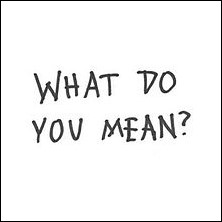You have an insurance bad faith case in which the carrier paid only a fraction of the estimated damages to a business in the aftermath of a hurricane. The carrier paid 100% its estimate, but that was only about 12% of the plaintiff’s estimate. Both sides absolutely want to know if jurors ever had experience with hurricanes. So, in voir dire, an attorney asks:
“We’d like to know about your experience with hurricanes. How many of you have ever lived through one? Raise your hand for ‘yes.’”
- Plaintiff legal team furiously notes every raised hand in the box.
- Defendant legal team furiously notes every raised hand in the box.
“And how many of you would say ‘no.’”
- Plaintiff legal team furiously notes every raised hand in the box.
- Defendant legal team furiously notes every raised hand in the box.
“And how many don’t know?”
- Plaintiff legal team furiously notes every raised hand in the box.
- Defendant legal team furiously notes every raised hand in the box.
Simple. Direct. Easy to score. But, here is why language matters in designing questionnaires or vior dire questions. Questions have to be valid to be of any use.
The hurricane questions above may lack validity. Here’s why . . .
The “yes” choice has hidden problems. “Yes” might mean:
- One went right through my town while I was in my house, hiding in the bathtub behind boarded up windows.
- Well, some of my family went through one while I was 1,000 miles away, but I had to help with the aftermath by making calls to FEMA, calling repair people, putting up relatives in my house.
- There was a hurricane reported on TV and I was horrified with the storm and horrified by the lack government response to it. I felt like I lived through it, for sure!
The “no” choice has problems, too, ones that could make you seem ludicrous.
- I’ve never been in one.
- No, I died. My spirit is sitting here in the box for me [she focused on “lived through” phrase in your question]
- This attorney is ridiculous. Watch the commotion I can create if I raise my hand now. See? All those people are writing down my name.
The “I don’t know” answer is strange, too.
- How could you not know if you lived through one or not?
- Does it mean you were hit in the head during the storm and you have a traumatic brain injury with memory loss or PTSD?
- “Well, maybe that storm I was in was a hurricane, but maybe not? It might have been a tropical storm or a big thunderstorm? I don’t know how they classify these things.”
Proper questions [whether written for a survey or asked aloud in court] must be valid.
Validity in social science comes in two basic forms:
- Face Validity [does the question get at what I really want to know?]
- Concurrent Validity [does the question relate to some other known sample group?]
To rewrite the hurricane question so that it has face validity, you first have to know what you want in an answer.
- If you want to know if the juror hunkered down as an actual storm pummeled them, you might ask, “Raise your hand if you have ever been right in a hurricane as it hit?”
- If you want to know just about dealing with the consequences of a hurricane, you might ask, “Raise your hand if you had to deal directly with the aftermath of a hurricane.”
You can see that these more direct questions get at answers that are useful just on the face of them [i.e., face validity]. Obvious. Very little ambiguity. Very good launching pad for a follow-up question. But so obvious that it might give the other side insight into your strategy for picking jurors.
It is trickier to use the question as one that has concurrent validity, but it might be more effective for your side. Concurrent validity means that some other group [like your focus groups or mock jurors] has answered the same question prior to learning about your case. Then, each research participant gives you their decision on your case. At the end of your research you can see how many people who answered the question with “yes”, “no”, or “I don’t know” voted for the plaintiff and how many for the defendant. Now, even if the question to the jury is ambiguous, it is tied to a known group [your research participants] and YOU know the general voting tendencies of people who give different answers. The advantage of concurrent validity is that the other side does not know what “the right answer” is for this question. For example, if mostly “yes” people supported your side in the research, then it is more likely that jurors who say “yes” may share this tendency. The concurrently valid answer is part of your juror profile.
Validity cannot be ignored. All your questions have to have it.
- If you can tie a question to a known group [like focus group members or mock jurors], then it is to your advantage to use concurrent validity.
- If you do not have a known group who has answered this question in the past, then you need to employ face validity and make sure your questions are getting at answers you want/need.
*I actually had the question “Have you ever lived through a hurricane?” pop up on my computer today for a national poll. It had three choices: “yes,” “no,” or “I don’t know.” That poll prompted this Persuasion Tip.
Share This Story, Choose Your Platform!
Click below to add your email address to our mailing list and receive the latest Persuasion Tips right in your inbox!

